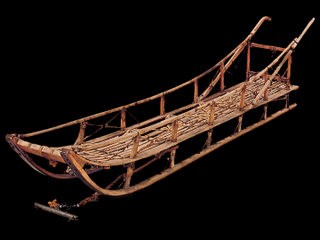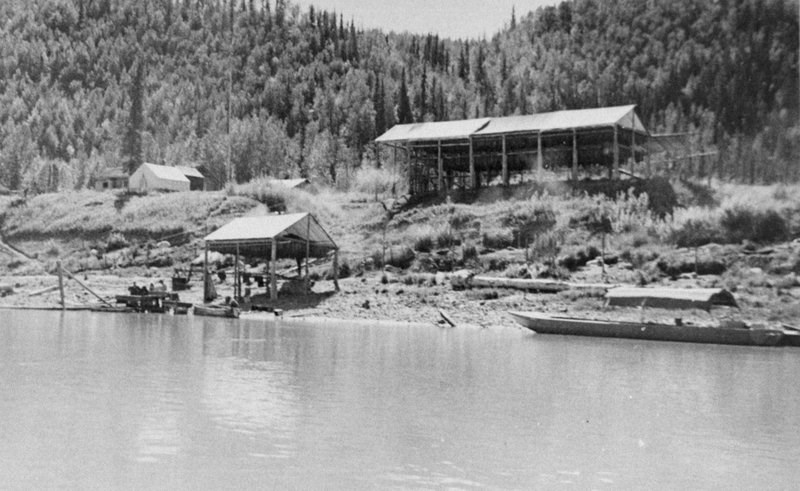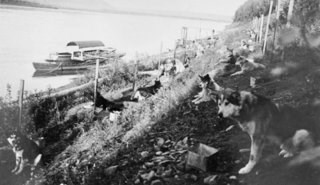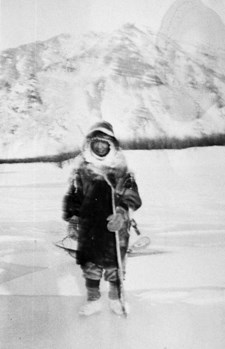
UAF Archives, George Beck Collection The things Biederman has been through would fill a book. I suppose no man knows more about sled dogs, or winter weather, or making his way alone in wild country.
—Ernie Pyle, 1937 Washington Daily News
Like so many others, Adolph “Ed” Biederman came to the Yukon River searching for a fortune in placer gold – but he ended up as one of Alaska’s most celebrated dog sled mail carriers. Born in Bohemia in 1870, Biederman came to the United States at the age of thirteen and ended up in San Francisco when news broke of the 1900 Nome gold strike. Arriving too late for paying claims, he got a job with the Northern Commercial Company and became a contract mail carrier between Tanana and Rampart. Eventually he received the route between the towns of Eagle and Circle and by 1918 he built a cabin roughly halfway between the two towns (and across from the mouth of the Kandik River). He also met and married Bella Roderick, an Athabascan woman from Medicine Lake near Circle Hot Springs and the granddaughter of the famous Yukon Flats chief Shahnyaati. 
National Postal Museum The Long Haul
In those days, delivering the mail on the Yukon required a reliable dog team and true grit. The 160-mile route took six days one way and, after a rest day, six days back. Biederman did this thirteen times each winter, covering 4000 miles of rough trail. He would start out from Eagle with a load of mail, often exceeding 500 pounds, and hope that river ice and snow conditions were favorable. Traveling northwest, sometimes on the river and sometimes on overland trails, he followed a string of roadhouses located at intervals along the way. Because he planned on a warm meal and a roof over his head, Biederman never carried bedding or tents or even much food. “My dad, he never believed in stopping to have no tea,” recalled his son, Charlie Biederman.

UAF Archives, George Beck Collection Family Business
Ed and Bella had five children, and two of their sons, Charlie and Horace, helped with the family business and learned the route. In the summer mail was delivered by passing steamboats, and the routine at the Biederman camp changed. The family boarded as many as sixty dogs for miners and trappers who did not want to care for dogs in the off-season. Feeding their own team and the boarders required a great deal of salmon, and the Biedermans were also known for their twin fish wheels and salmon drying operation, where they processed nearly three tons of fish annually.

UAF Archives, George Beck Collection 
UAF Archives, George Beck Collection (1977-204-41) End of an Era
Horace Biederman later recalled how at the age of fifteen he was taken out of school to substitute for his father, and for a time father and son ran the trail together, particularly early in the season when the river ice was not yet solid. Horace later shared the route with his brother Charlie until in 1938 when the Biedermans lost the mail contract permanently to airplane pilots. The aviation age had arrived in remote corners of Alaska, and it was the end of an era for dog-team mail carriers and freight haulers. Ed Biederman continued to maintain the camp until 1945 when he died at age seventy-five and his family moved permanently to Eagle. Today the Biederman Camp is on a private inholding inside Yukon-Charley Rivers National Preserve, and visitors can still glimpse what remains of the camp, a reminder of the many hard miles of dog driving by mail carriers on the Yukon ice.
|
Last updated: September 23, 2015
